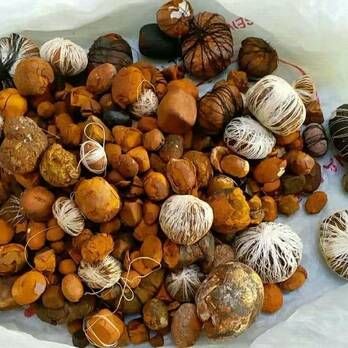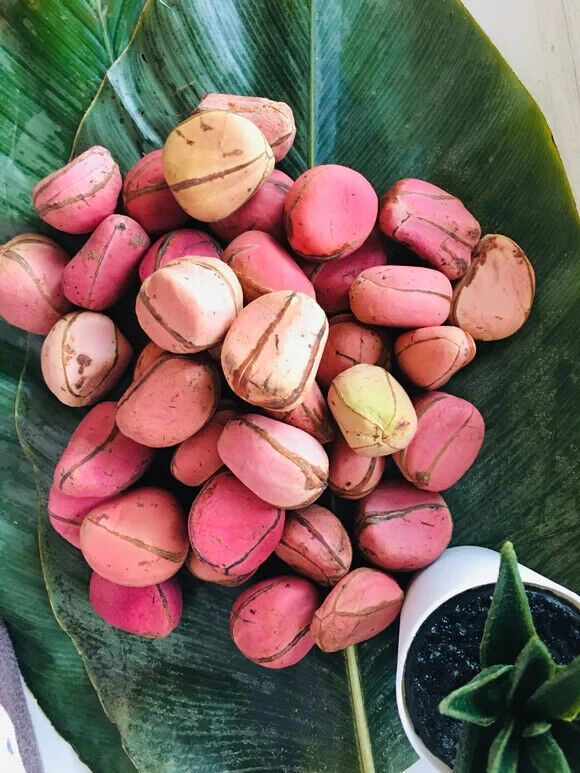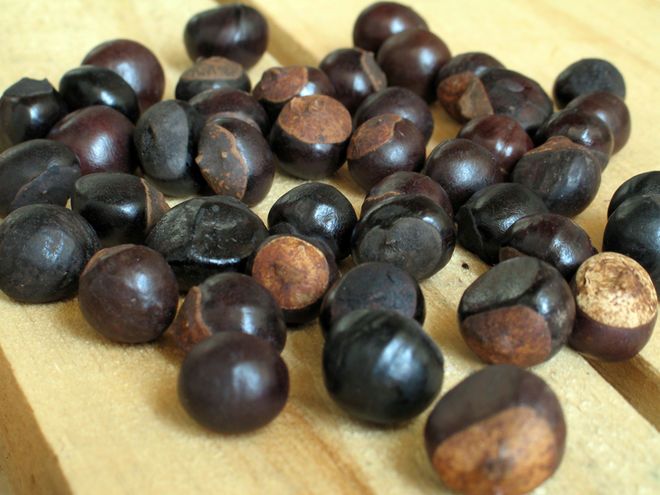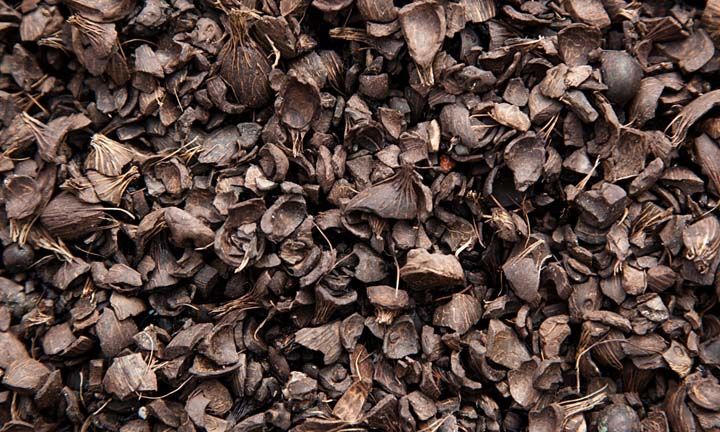What It Is
Ox gallstones, also known as bovine gallstones or bezoars, are rare and valuable stones that form naturally in the gallbladders of cattle. They are produced when bile components such as cholesterol, calcium bilirubinate, and bile pigments accumulate over time and crystallize. Unlike common gallstones in humans, ox gallstones are highly prized due to their rarity and medicinal applications, particularly in traditional medicine systems.
These stones are typically irregular in shape, ranging in size from small granules to larger pebble-like forms. Their colors vary, with common shades being golden yellow, orange, brown, or even reddish. Their texture is often smooth and waxy, and they emit a distinct characteristic odor.
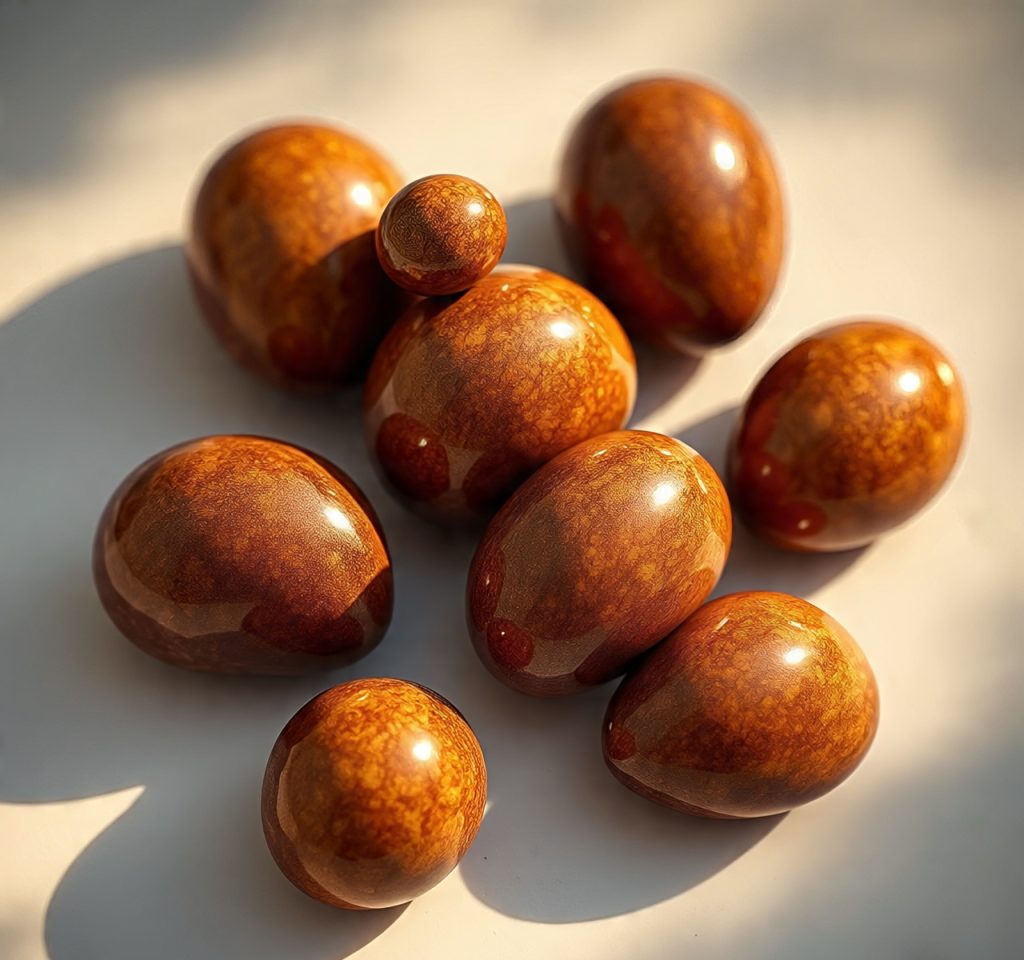
Export of Ox Gallstones
The export of ox gallstones is a niche but highly lucrative business. They are rare by-products obtained during cattle slaughtering and processing, making them difficult to source in large quantities. Exporters usually deal with pharmaceutical companies, traditional medicine practitioners, and specialized buyers.
Major export destinations include:
-
China – for use in Traditional Chinese Medicine (TCM)
-
Japan – for pharmaceutical and medical purposes
-
Korea – for herbal medicine and drug formulations
-
Europe – limited but growing demand in pharmaceuticals and homeopathic medicine
Because of their rarity, gallstones are often sold per gram and command very high prices. Pure, high-quality ox gallstones can fetch thousands of dollars per kilogram in the international market.
Uses of Ox Gallstones
Ox gallstones have been used for centuries in traditional medicine. Their value lies in their believed therapeutic properties.
-
Traditional Medicine (TCM and Ayurveda)
-
Used as an antidote for poisoning
-
Prescribed for fever reduction and detoxification
-
Applied in treatments for liver and gallbladder disorders
-
Believed to improve heart health and blood circulation
-
-
Pharmaceutical Applications
-
Used in the production of certain drugs and medicinal formulations
-
An ingredient in liver and digestive medications
-
Research ongoing into their chemical composition for new drug development
-
-
Homeopathic Remedies
-
Used in small doses for treatment of ailments such as jaundice, liver issues, and inflammation
-
-
Luxury Trade
-
Due to rarity, some buyers purchase them for collection and resale at higher prices
-
Specifications for Export
When exporting ox gallstones, buyers expect strict adherence to quality standards. Some of the specifications include:
-
Purity: Stones should be natural and free from adulteration (no resin, wax, or artificial substitutes).
-
Moisture Content: Must be properly dried to avoid decay and mold.
-
Appearance: Golden yellow to reddish-brown, smooth, dry, and solid.
-
Size and Weight: Can range from small grains (a few millimeters) to larger stones of several grams each.
-
Odor: Natural, not chemically treated.
-
Packaging: Airtight and moisture-proof packaging, usually in small quantities (grams) within sealed containers.
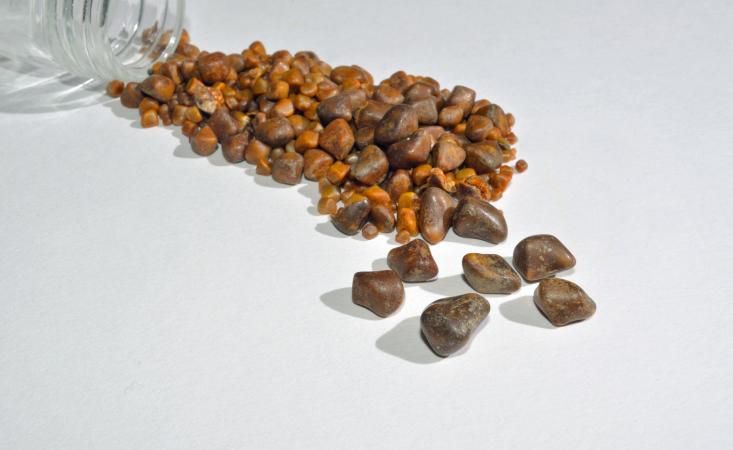
Export Process
-
Sourcing
-
Obtained from licensed abattoirs and meat processors.
-
Stones are carefully extracted from cattle gallbladders during slaughter.
-
-
Drying & Processing
-
Gallstones are dried naturally in controlled environments to preserve quality.
-
Avoid exposure to direct sunlight, which can degrade value.
-
-
Quality Control
-
Stones are sorted by size, weight, and quality.
-
Impurities are removed to meet pharmaceutical standards.
-
-
Documentation & Certification
-
Export requires veterinary certification and clearance from local authorities.
-
Must meet health and safety regulations of the importing country.
-
-
Shipping
-
Usually transported in small, secure packages due to their high value.
-
Shipped via air cargo to ensure safety and speed.
-
HS Code
The HS Code for Ox Gallstones is 05100020 – which falls under “Animal products not elsewhere specified or included; gall and other bile, dried, whether or not powdered.”
Global Market Demand
The demand for ox gallstones is high but limited to specific markets. China is the largest importer, accounting for more than 70% of the global trade. The stones are highly valued in Traditional Chinese Medicine, where they are believed to have detoxifying and healing effects.
Because of their scarcity, the supply cannot always meet the growing demand. This scarcity creates an opportunity for exporters who can secure legitimate sources. However, it also makes the trade vulnerable to counterfeiting and fraud (e.g., artificial stones made from resin and other substances).
Price Range
Prices vary significantly depending on purity, color, and size.
-
High-quality stones: Can sell for US$20 – US$50 per gram.
-
Average quality stones: Around US$15 – US$25 per gram.
-
Large, rare stones may be sold in auctions for much higher amounts.
Challenges in Exporting Ox Gallstones
-
Legality: Some countries impose restrictions due to concerns about illegal sourcing and animal welfare.
-
Counterfeiting: Fake stones are common in the market. Buyers require strict verification and testing.
-
Supply Limitation: Dependence on cattle slaughter makes the supply unpredictable.
-
Ethical Concerns: Animal rights groups often campaign against their use.

Business Opportunities
-
Partnering with certified abattoirs for a steady supply.
-
Building relationships with pharmaceutical companies and traditional medicine distributors.
-
Focusing on value-added processing (e.g., powdered gallstone extracts).
-
Developing a transparent and traceable supply chain to build buyer trust.
Summary:
Ox gallstones are rare and valuable by-products of cattle slaughter, used mainly in traditional medicine and pharmaceuticals. With high global demand, particularly in Asia, they represent a niche but highly profitable export product. Exporters must ensure authenticity, purity, and compliance with international regulations to succeed in this market.

